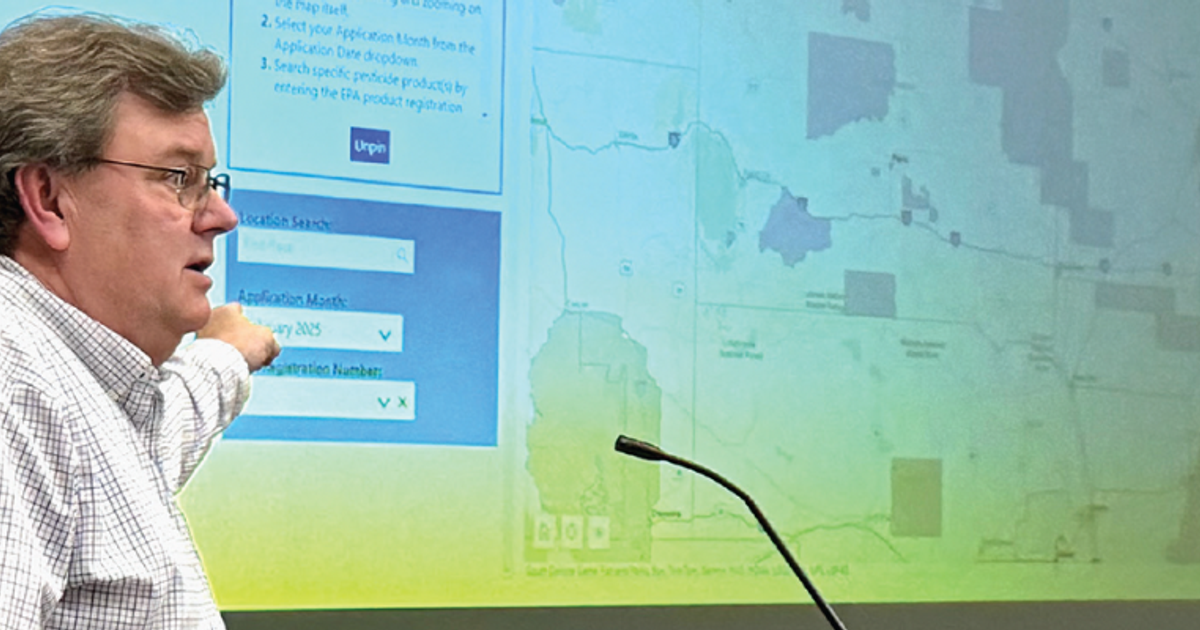RULES UPDATED FOR PESTICIDE USE

That may sound like a straightforward recommendation, but it’s more important than ever to follow regulations listed on pesticide labels.
“Major changes are coming and they’re moving relatively fast in this area of pesticide regulation,” said Tom Gere, an Ag Department Environmental Scientist Manager. “Everyone needs to read the label of the product they’re going to be using. The label is the law.”
Gere shared information with applicators during several presentations in March sponsored by the South Dakota Corn Utilization Council, South Dakota Soybean Checkoff, South Dakota Wheat Growers Association and the State Ag Department.
SD Corn Executive Director, DaNita Murray, said it’s a priority to stay attuned to federal policies and updates, and to share important information.
"On issues such as this on crop protection, the SD Corn Utilization Council helps to educate growers regarding the new EPA requirements, and the SD Corn Growers Association as a matter of agricultural policy will monitor (for now) to help ensure that the goalposts are not moved in the future, requiring farmers to comply with a more onerous label,” Murray said.
Labels are updated when an active ingredient is reregistered, when a new product is introduced or when a new ingredient is added.
Pesticide applications will be regulated based on a point system developed by the Environmental Protection Agency. For environmental protection, each pesticide label contains a mitigation number, ranging from zero to 9 depending on the ingredients.
That number is vital to determine proper chemical use. For example, if a pesticide has a mitigation number of 4, it can be applied only if a field has a mitigation measure of at least 4 points. If an applicator is mixing two or more products in a tank, the mitigation number is derived from the product with the highest number. For example, if there are two products with a mitigation number of 3 being mixed with a product that has a number 6, the field must have a mitigation number of at least 6.
A field’s mitigation number is determined by various environmental factors. Gere said every county in eastern South Dakota will have an initial 2 points because of annual rainfall averages calculated over the past 54 years. An applicator can gain a point by keeping track of mitigation measures that are taken, and another point by consulting with an agronomist. Those steps alone bring the total to 4 points.
Other steps need to be taken if a pesticide has a higher number. For example, if a pesticide label has a minimum of 6 points for the crop uses listed and only 5 points mitigation points can be reached, a different product would have to be used because the mitigation points fall short.
The mitigations prevent products from running off into surface water, ground water and critical habitat. The EPA developed these new strategies after decades of lawsuits filed by environmentalists. The Federal Insecticide, Fungicide, and Rodenticide Act (FIFRA) is the federal law that regulates the registration, distribution, sale, and use of pesticides.
If pesticides are to be applied in an area where there may be an endangered species, Gere said an applicator needs to check what is known as Bulletin Live 2, an EPA website that provides information for specific geographic areas.
There are several endangered and threatened species in the state. The scaleshell mussel is an endangered species found in areas of Clay, Yankton and Union counties. The endangered Higgins eye (pearly mussel) is found in Bon Homme, Clay, Hutchinson, Turner and Yankton counties. Threatened species in multiple counties include the American burying beetle, Dakota skipper and Western Prairie fringed orchid.
In addition to the point system, pesticide labels will include a mandatory buffer requirement for each product, Gere said. Not all products currently have that. There will be ways that applicators can reduce the buffer based on boom height, types of nozzles and drift reduction agents. Relative humidity and windbreaks also come into play.

